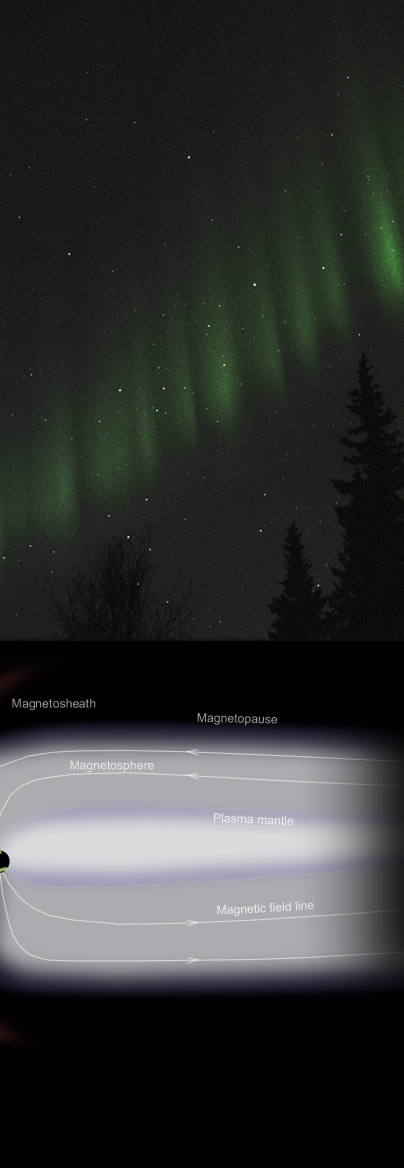 |
 |
 |
| Collisional Excitation ~ Oxygen atom aurora imaged by Jan Curtis (Latitude64Photos, Aurora site) at Fairbanks, Alaska. ©Jan Curtis, shown with permission. The previous OPOD showed airglow, the high atmosphere light produced by excitation by the Sun's extreme UV light. The better known, and often far brighter, high atmosphere excitation is the aurora, the result of bombardment by high energy particles from Earth's magnetic tail.. This aurora's predominant green colour is the 557.7 nm wavelength light of oxygen atoms decaying from an excited state to another of lower energy (O1S -> 1D). The oxygen was excited by collisions with high energy particles accelerated downwards into the atmosphere from the earth's night side magnetotail. The particles reach Earth in the solar wind but, on their own, would produce few aurorae because they are ordinarily not nearly energetic enough. Under the right magnetic and energetic conditions the solar electrons, protons and heavier ions enter the sunward side of Earth's magnetosphere and are swept back by magnetic forces into the plasma mantle of the million km long night-side magnetotail. There they are are trapped until magnetic rearrangements accelerate some of them violently downwards. |
 |
 |
 |

| About - Submit | Optics Picture of the Day | Archive | Previous | Next | Today |